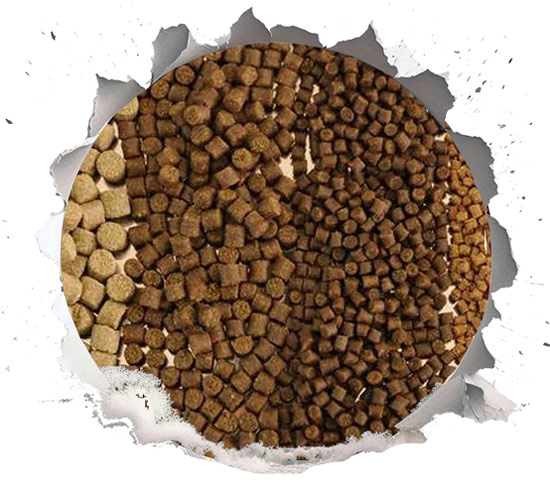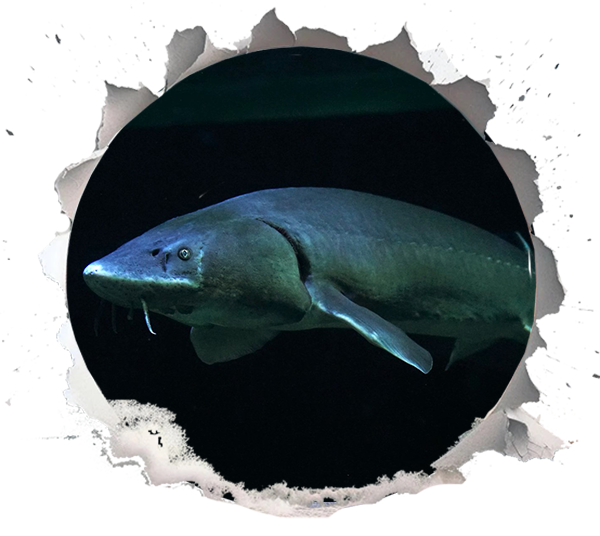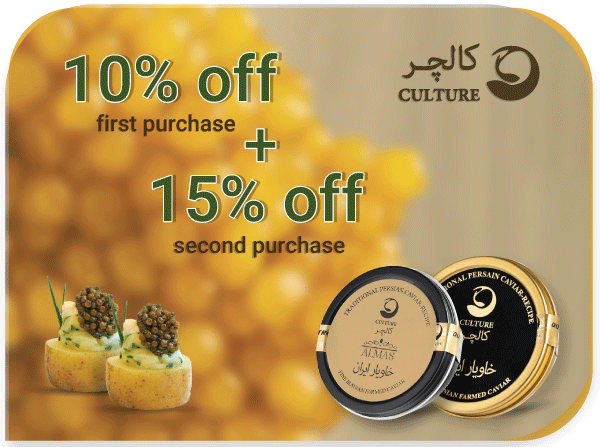New Sustainable Sturgeon Farming Techniques to Enhance Taste

Sturgeon, often dubbed “living fossils,” are among the oldest vertebrates on Earth, renowned for their roe, which is transformed into caviar, a delicacy celebrated for its distinctive taste and texture. However, wild sturgeon populations have plummeted due to overfishing, habitat destruction, and pollution. To counter this decline and satisfy the rising demand for caviar, sturgeon farming has emerged as a pivotal industry. Modern sturgeon farming techniques not only aid in preserving wild populations but also elevate the sustainability and quality of caviar. This article delves into the latest advancements in sturgeon farming, highlighting their contributions to environmental sustainability and the exceptional taste of caviar.
Traditional Sturgeon Farming Techniques
Historically, sturgeon farming relied on simple, time-tested methods that mimicked the natural habitats of these ancient fish. Sturgeons were typically reared in natural ponds, rivers, or concrete tanks, fed diets of naturally occurring foods like zooplankton or small aquatic organisms, and managed with local knowledge passed down through generations. These traditional sturgeon farming techniques were often cost-effective and straightforward, requiring minimal investment in technology or infrastructure. However, they came with significant limitations, including low production efficiency, environmental challenges, and inconsistent caviar quality that struggles to meet the expectations of today’s discerning global market.
Advantages and Disadvantages of Traditional Techniques
| Aspect | Advantages | Disadvantages |
|---|---|---|
| Cost | Cost-effective due to minimal infrastructure and reliance on natural resources. | Limited scalability, making it difficult to meet large-scale commercial demands. |
| Implementation | Simple to set up and manage with basic resources and local knowledge. | Prone to environmental degradation, such as water pollution from waste buildup. |
| Expertise | Leverages traditional know-how, requiring little formal training. | Inconsistent caviar quality, failing to meet modern standards for taste and texture. |
| Sustainability | Low reliance on industrial inputs, reducing initial environmental footprint. | Uncontrolled waste and uneaten food can harm local ecosystems and water quality. |
Why Traditional Methods Fall Short?
While traditional sturgeon farming techniques were well-suited to small-scale operations, they face significant challenges in today’s context. The reliance on natural water bodies often led to environmental issues, such as nutrient overload from fish waste and uneaten food, which could degrade local ecosystems. Additionally, the lack of control over water quality, temperature, and feeding regimes frequently resulted in slower growth rates and variable caviar quality. For instance, caviar from traditionally farmed sturgeons might lack the consistent texture, flavour, or size demanded by high-end markets. These limitations make traditional methods less viable for meeting the modern demand for sustainable, high-quality caviar while adhering to strict environmental regulations, such as those set by the Convention on International Trade in Endangered Species of Wild Fauna and Flora (CITES). We suggest you take a look at our guide to water quality influence on caviar for more information.
Modern Sturgeon Farming Techniques
Recent advancements in sturgeon farming techniques have been driven by the need for sustainability and superior product quality. These modern methods integrate cutting-edge technology and scientific insights to optimise production while minimising environmental impact.
Hatchery and Breeding Techniques

A significant development in sturgeon farming is the use of advanced hatchery and breeding technologies. Modern farms employ artificial fertilisation, where eggs and milt are stripped from broodstock and fertilised in controlled settings. Eggs are treated to remove adhesiveness and incubated in hatching jars, ensuring high survival rates. Hormone induction is used to precisely time spawning, maximising breeding efficiency.
Some farms utilise surgical egg collection, extracting ovulated eggs through small incisions to allow females to produce eggs biennially without being sacrificed. However, this method may compromise caviar quality, so it is applied selectively.
Rearing Systems
Rearing systems have seen substantial improvements. Many modern sturgeon farms use recirculating aquaculture systems (RAS), which incorporate advanced water filtration and recirculation technologies. These systems maintain clean, oxygenated water, creating an optimal environment for sturgeons while reducing water usage and environmental impact.
In regions like Lake Qiandao, China, sturgeons are raised in floating nets within natural water bodies, allowing natural feeding, which is believed to enhance caviar quality.
Feeding

Diet is critical to sturgeon health and caviar quality. Modern farms provide tailored diets comprising high-protein fish meal and oils, supplemented with vitamins and minerals. For females destined for caviar production, diets include significant marine lipids, which improve roe quality. These precise feeding regimes contribute to both fish health and the superior taste of caviar.
Sustainability Practices
Sustainability is at the heart of modern sturgeon farming. By producing caviar through aquaculture, farms reduce pressure on wild sturgeon populations, aiding their recovery from decades of overfishing. Strict regulations, such as those under the Convention on International Trade in Endangered Species of Wild Fauna and Flora, ensure sustainable production and prevent harm to wild stocks.
Land-based systems like RAS contain waste, preventing pollution of natural water bodies. Some farms also support conservation by releasing fingerlings into the wild to bolster wild populations. For instance, a farm in Canada conducts tagging studies to monitor wild sturgeon, contributing to conservation efforts.
Impact on Taste and Quality
Advancements in sturgeon farming techniques have significantly enhanced caviar’s taste and quality. Farming methods and diets directly influence flavour profiles. Quality also hinges on meticulous handling and processing. From harvesting to packaging, each step must preserve the roe’s delicate nature. Farms adhering to rigorous quality control standards ensure caviar meets the expectations of discerning consumers.
Case Studies
A caviar farm in Canada exemplifies sustainable sturgeon farming by combining shortnose sturgeon farming with wild Atlantic sturgeon management. Using RAS, they maintain optimal conditions for farmed fish. Their tagging studies with the University of New Brunswick monitor wild populations, supporting conservation. Their caviar and value-added products, like smoked loins and sturgeon tripe, are praised for their quality and clean taste.
In British Columbia, white sturgeon are farmed in land-based tanks, producing both caviar and meat. These farms, such as Target Marine Hatcheries, use RAS to recirculate water, minimising environmental impact. By utilising the entire fish, they reduce waste and enhance economic viability, offering high-quality caviar and nearly boneless sturgeon meat (Choices Market).
Iranian Sustainable Farms
Iran is a global leader in caviar production, renowned for crafting some of the world’s finest caviar from the pristine waters of the Caspian Sea. Iranian sturgeon farming techniques lead to non-GMO caviar production with high-quality, particularly Beluga caviar from the critically endangered Huso huso sturgeon. By using natural methods and advanced systems like recirculating aquaculture (RAS), Iranian farms create caviar with a rich, buttery taste that rivals wild varieties, ensuring both authenticity and sustainability.

The conservation of Huso huso is vital, as overfishing and habitat loss have pushed this species to the brink of extinction. Iranian research focuses on breeding Huso huso in controlled environments, with 128 farms across the country producing tons of caviar annually. These efforts preserve genetic diversity and reduce pressure on wild populations while meeting global demand for premium caviar with a clean, organic flavour.
Culture Caviaris an Iranian brand that exemplifies sustainable caviar production. Operating farms along the Caspian Sea, it prioritises high water quality, ethical harvesting, and minimal salting (Malossol) to deliver premium Beluga, Ossetra, and Sevruga caviar. Aligned with global sustainability standards, Here at Culture Caviar, we supports Huso huso conservation while offering a luxurious taste, reinforcing Iran’s reputation for exceptional, ethically produced caviar.
Conclusion
Modern sturgeon farming techniques mark a significant advancement in aquaculture, balancing sustainability with the production of premium caviar. By leveraging technologies like RAS, hormone induction, and tailored diets, these methods conserve wild sturgeon populations while delivering caviar with exceptional taste and quality. As global demand for caviar grows, the industry must continue to innovate and adhere to sustainable practices to ensure this ancient delicacy remains available for future generations while safeguarding the environment.

